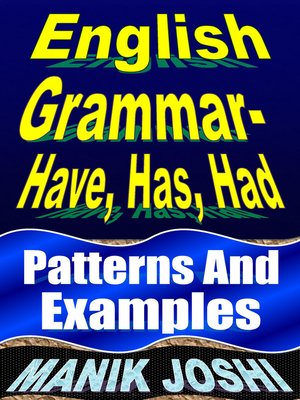English Grammar- Have, Has, Had
ebook ∣ Patterns and Examples: English Daily Use, #18 · English Daily Use
By Manik Joshi

Sign up to save your library
With an OverDrive account, you can save your favorite libraries for at-a-glance information about availability. Find out more about OverDrive accounts.
Find this title in Libby, the library reading app by OverDrive.



Search for a digital library with this title
Title found at these libraries:
| Library Name | Distance |
|---|---|
| Loading... |
We use "have, has, had" in our everyday speech, therefore it's critical to understand the fundamentals. "Has" is used with the pronouns he, she, and it, and with singular subjects. "Have" is used with the pronouns I, you, we, and they, and with plural subjects. The verb "have, has, had" are used as auxiliary Verbs as well as main (ordinary) verbs. They also do the function of 'modal verbs'. 'The present tense is indicated by "has" and "have," whereas the past tense is indicated by "had."
This book will help you understand how to use the verbs have, has, and had in English grammar.







